Editor’s Note
What’s better than the first snow of the year? Watching the Town Edit in the snow. To get you stoked, we’re previewing one of the feature stories from the Winter issue. Enjoy it while you can — it’s only live for a couple of days.
See you tonight at the Ponderosa Center at 6 p.m. [Full details here.] The band will be playing under a tent, next to a heater, just for you.
Two years ago, Mike Maciaszek and Becky Bjork camped halfway up California’s Mount Shasta in the late-spring snow, then strapped their skis to their backs and set out at 2 a.m. with headlamps to climb the west face of the 14,180-foot peak. Maciaszek had worked as a mountain guide for years, and Bjork had a background in professional bicycle racing; they took a week’s vacation and headed down to Northern California, confident they could reach the summit.
Savvy mountaineers, Maciaszek explains, know to start their climb in the middle of the night and get off the mountain by early afternoon. “Because then, the snow is melting, or the sun's hitting it and the rocks are getting loose,” he says. “You’ll get rock fall in the afternoon, or you could have wet slab avalanches. The weather could turn and get really cold, and now your crampons are on this sheet of ice, and it's not stable.”
They saw no rock fall that day, no avalanches, and no sheets of ice. But four hours into their climb, the wind began to blow.
“Once we summited the ridge line, the wind was taking our skis and basically using them as sails,” Bjork explains. “We couldn’t stand up. We had to crawl across the top of the ridgeline and yell at each other because wind gusts were coming up to seventy miles per hour.” At 13,000 feet, they were literally being blown off the mountain. Maciaszek decided it wasn’t safe to go any farther, and they skied back down.
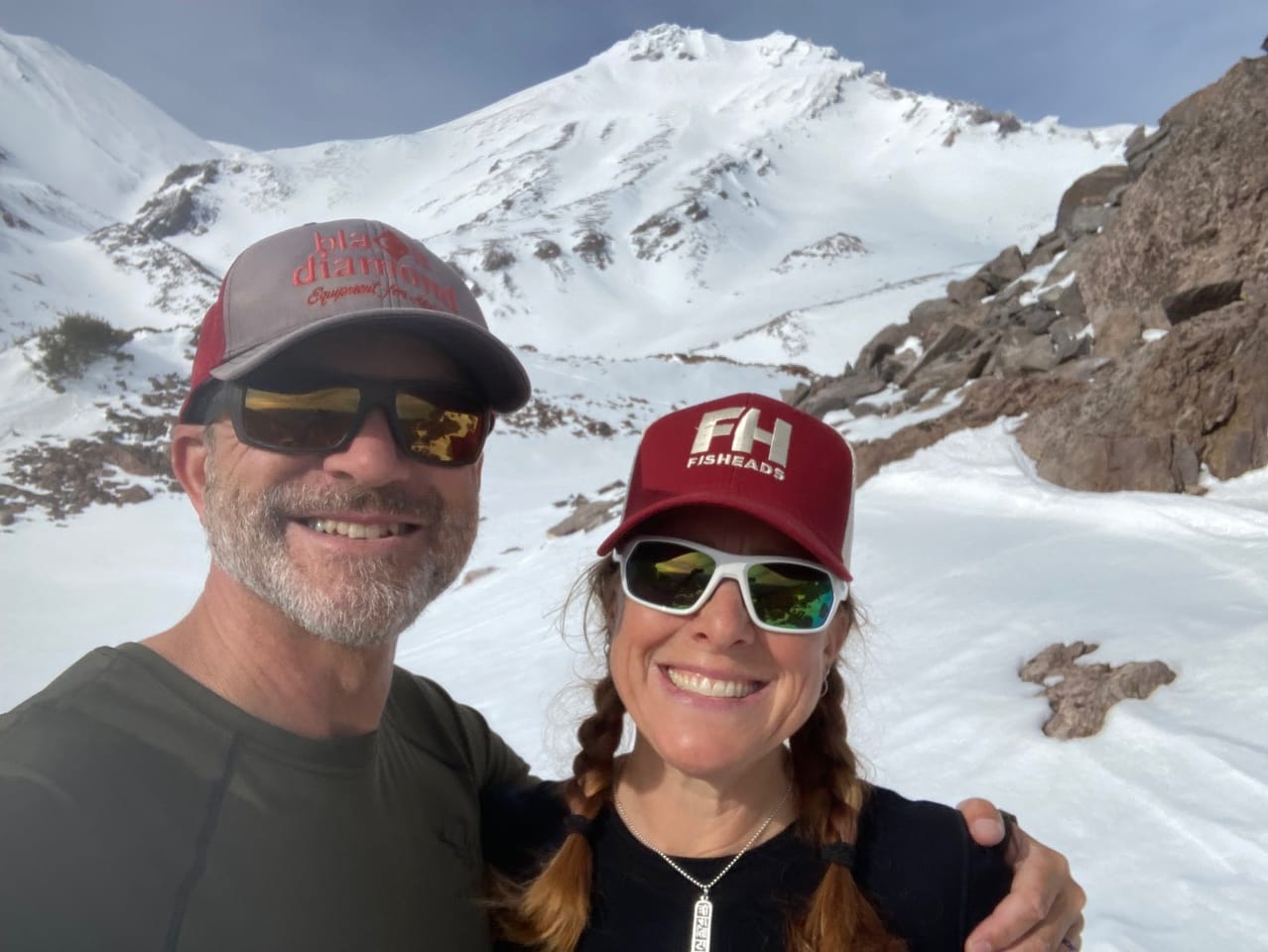
Experienced mountaineers know that you can be in the best shape of your life with all the right equipment on the morning you intend to bag a peak; still, if the weather doesn’t cooperate, you’re not going anywhere but down. The Mount Shasta Wilderness 2023 Climbing Ranger Report notes that approximately 5,000-6,000 climbers attempted to summit that year, and half made it to the top. Sometimes people don’t have the right kind of clothing or equipment. Other times, climbers aren’t as in shape as they thought for an adventure that takes between eight and 10 hours.
The couple lives by a motto coined by Bjork after listening to Maciaszek talk about his fly-fishing experiences: Release expectations; catch moments. “Yes, we want to get on the top, but maybe we're going to end up just skiing and having a good time,” he explains. “For us, it's more about just getting out in the mountains and releasing the expectations and seeing what happens.”
Another Chance
That day two years ago, they made the best of a less-than-ideal situation. “It was the most glorious ski back down the mountain,” Bjork says. In 2023, they made plans to go again but were thwarted by three feet of new snow and high avalanche conditions. They headed for Idaho’s City of Rocks National Reserve to go climbing instead. Still, the idea of summiting Shasta together continued to intrigue them. In 2024, they decided to attempt the climb again.
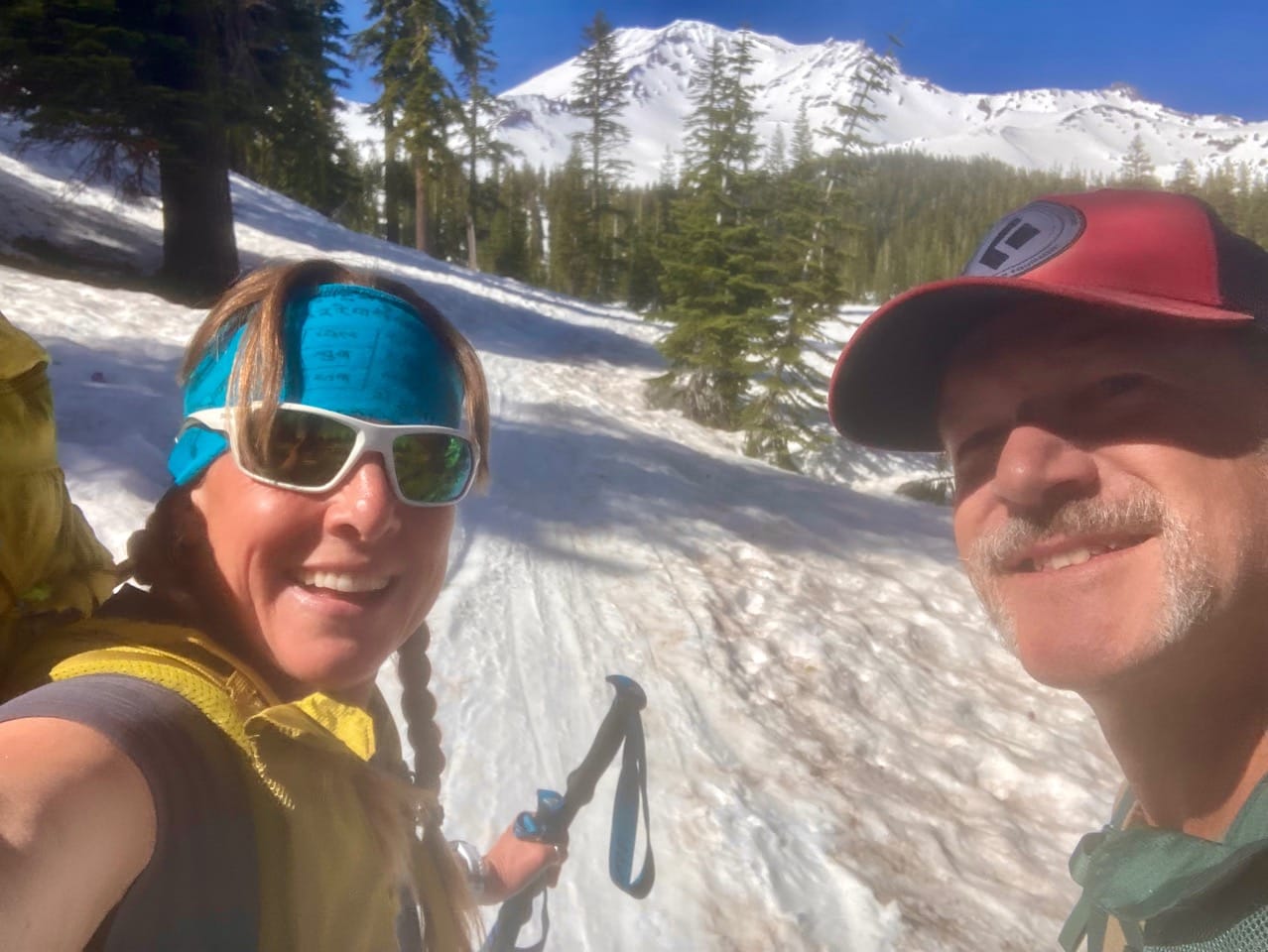
They studied Mountaineering: The Freedom of the Hills, a book Maciaszek calls “the long-standing bible of mountaineering, and rock- and ice-climbing.” They spent the winter cross-country skiing and climbed up Brundage Mountain to practice self-arrests—that is, stopping an uncontrolled slide down a snowy or ice surface by digging into the slope with an ice axe and footwear traction devices called crampons. “Mike had me practice lifting my crampons up in the snow, because if you don’t do this, they’ll get caught and you’ll flip over,” Bjork explains. “Mountaineering isn’t just like throwing on crampons and grabbing an ice axe. It’s about knowing how to use them.”
In May of 2024, they drove back to Shasta and gave themselves a four-day window in which they could feasibly summit.
“We rolled into town at four o’clock in the afternoon, and because of wind and these lenticular clouds that descend over the mountain in a whiteout, we realized our window was right then and the next day,” Maciaszek says. “We went up as far as we could that evening, packed up our stuff, got up, got up as far as we could from 6800 feet to 83 and made camp.”
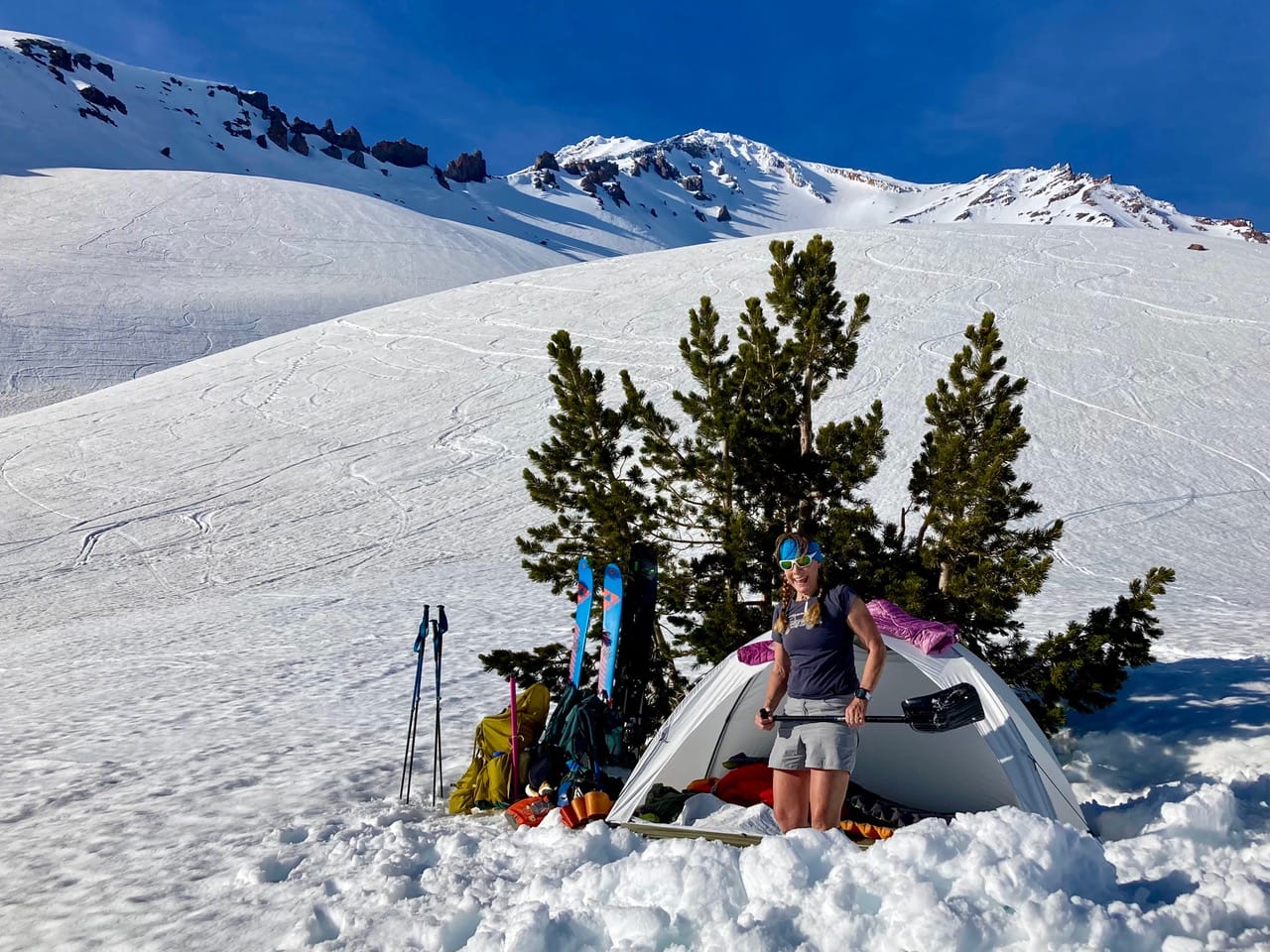
Bjork dug a platform out of the snow for their tent, which they had to tie to trees so the wind wouldn’t blow it away. They made ramen with tofu and vegetables and crawled into their sleeping bags early to stay warm. Remembering how the wind had pummeled their skis two years before, they found themselves grappling with a difficult decision: bring the skis for an epic downhill ride or leave them behind.
“If you’re a competent skier,” Maciaszek says, “it’s easier to ski down the mountain than to hike or glissade—that is, to sit or squat and slide down without skis. We decided to sacrifice the skiing and aim for getting on top of the mountain.”
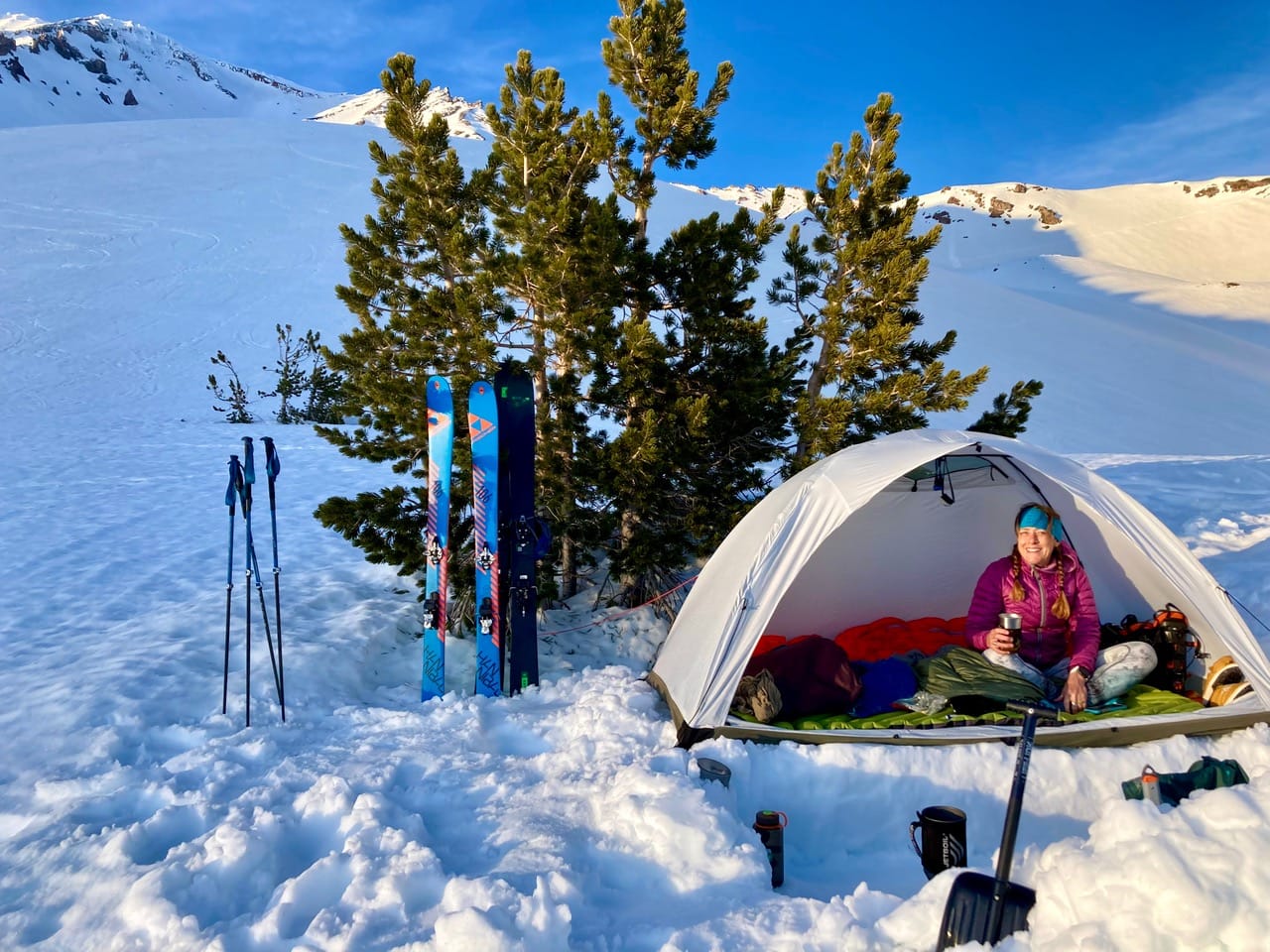
They started out at 3 a.m. with their headlamps. Bjork witnessed firsthand why Maciaszek advocated climbing in a slow, methodical manner. “I'm more of a hurry up and get to the top person,” she explains. “Mountaineering requires slow steps and just kind of keeping your heart rate down. That’s hard for me. But there were groups out there that would go really fast, and they'd pass us, and then they'd be bent over, winded.”
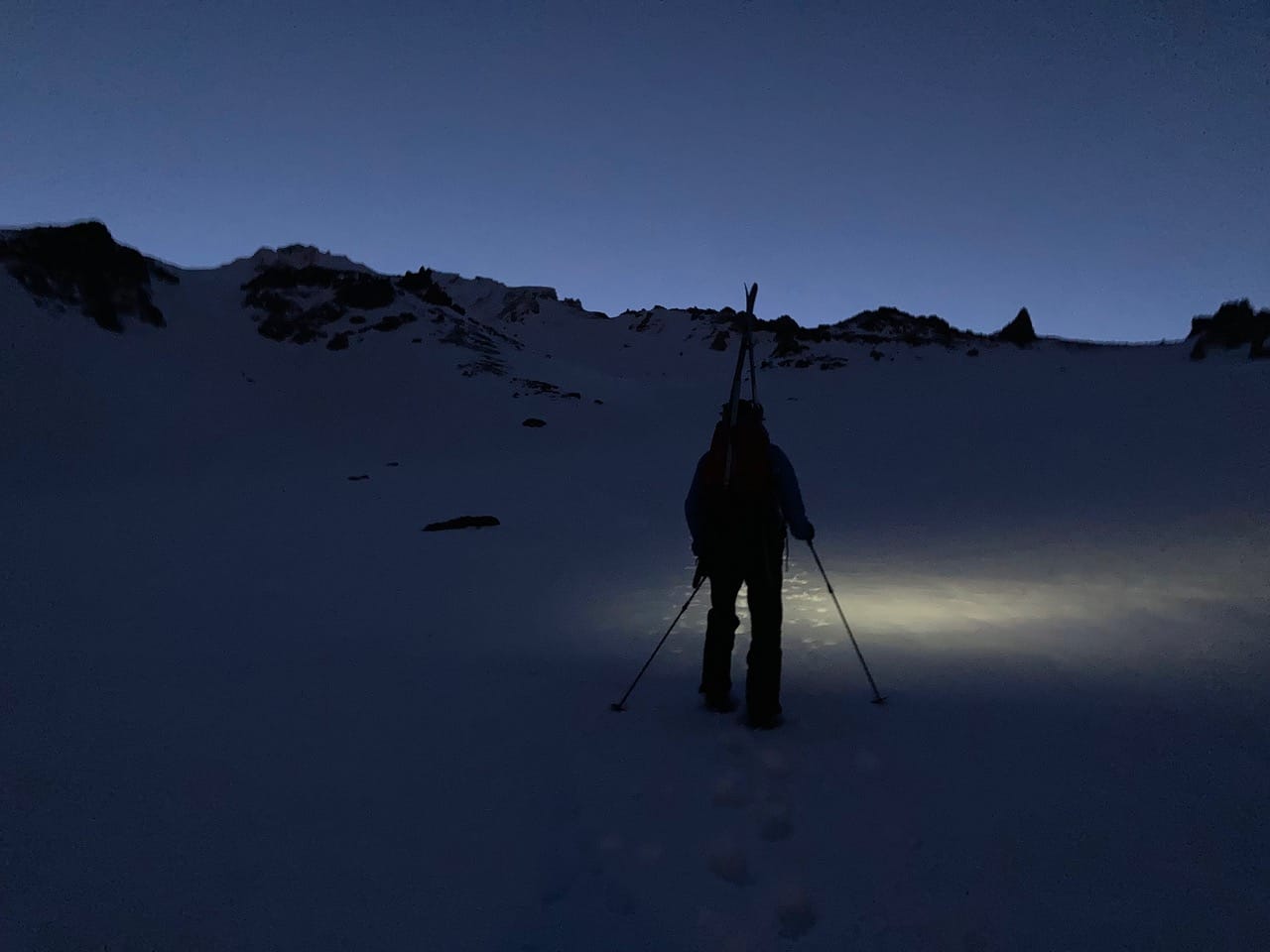
“You’re more of a turtle than a rabbit when mountaineering,” Maciaszek says. The rewards, he notes, are powerful. “When the sun comes up and you've already been climbing in the dark by headlamp for three hours, the morning is pretty spectacular.”
He and Bjork ended up being the first people that morning to summit Mount Shasta. At the top, they paused long enough on the slippery rime ice to take a few photos, and then they headed back down before temperatures got too warm. “We were able to glissade a good portion of the descent,” Maciaszek says, “but it can be a very dangerous thing to do because you’re basically sitting on your butt in the snow and sliding down and using your ice axe to stop if you get out of control. Becky’s really good at it. She got some good speed, and she was even hitting some little jumps on the way down.”
The fun stopped at 9,500 feet. Temperatures warmed so that they found themselves slogging down the mountain in thigh-deep slush. “These moments can be a little challenging, like when you start getting tired, or I had my hamstring tighten up,” Maciaszek explains. “It’s not comfortable, especially when you’re getting a headache from the altitude.”
Despite challenges on the trail, they joke together easily when recounting their Shasta adventures. He teases her about her need for speed, and she refers to him as “Señor Safety." “I come from a guiding background of bringing people home safely,” Maciaszek says, “and Becky comes from more of a professional athlete realm of ‘Let’s go get it.’ We’ve merged those two approaches for success.”
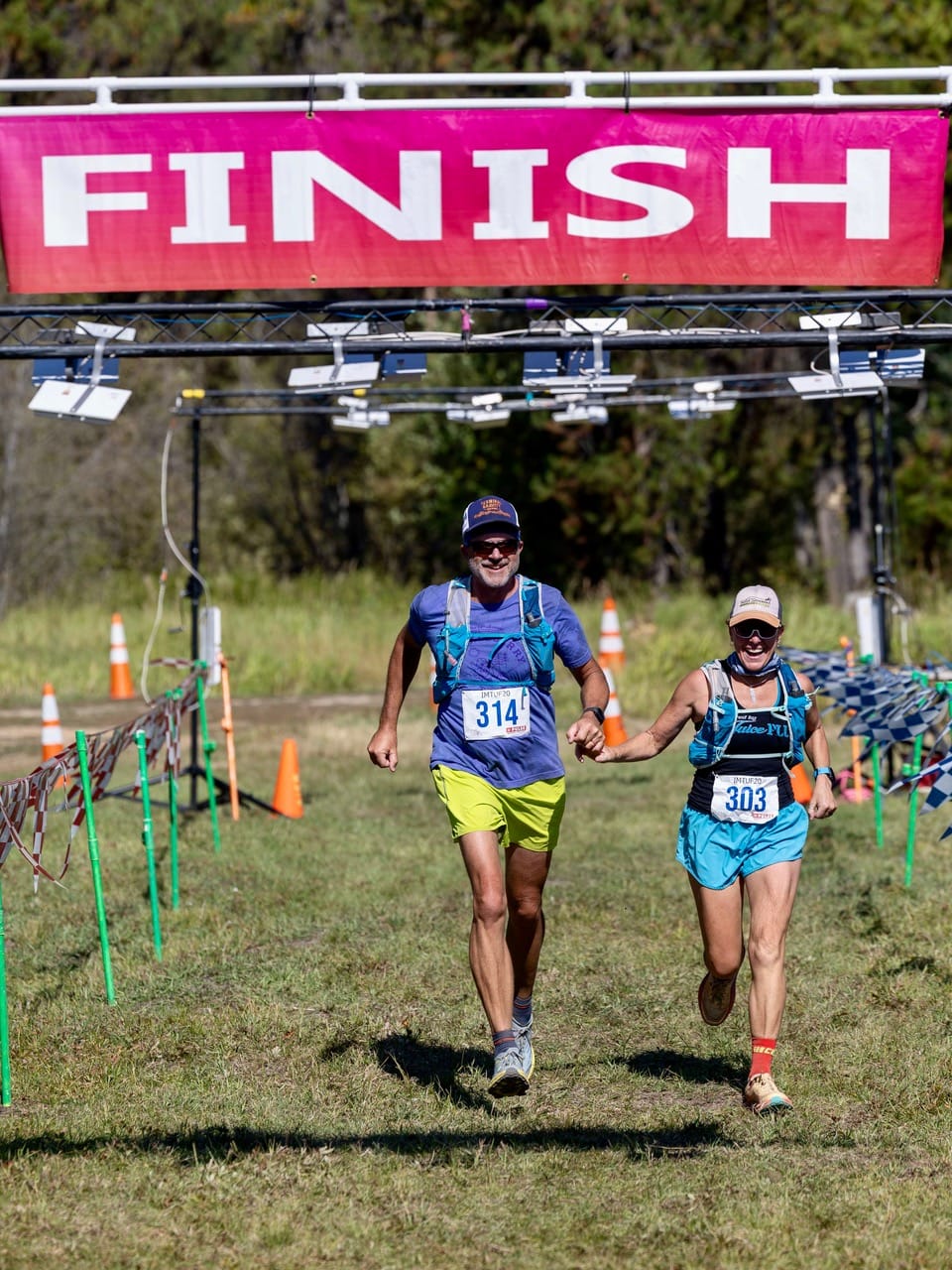
They spent this summer trail running and completed a marathon in July. They ran through the finish line holding hands. “Going through things that are hard with somebody strengthens the connection,” Maciaszek says. “These types of challenges give us memories that we carry forward.”
If You Go…
- The U.S. Forest Service publishes an online pamphlet titled “So You Want to Climb Mt. Shasta,” available for free at www.fs.usda.gov. It includes a map, descriptions of trails, information on how to obtain a wilderness permit, and a list of USFS-approved guide services, as well as contact information for equipment rentals.
- Want more information? Check out “Seminar: Climbing Mt. Shasta” on YouTube, published by the Mountain Ascent Association.
- Where To Sleep: If you’re waiting for the wind to stop blowing, or you want to treat yourself to a post-hike shower and bed, consider staying in the town of Mt. Shasta at the Cold Creek Inn or the Mt. Shasta Resort, or the luxurious Mossbrae Hotel in Dunsmuir. Prefer to camp? Check out USFS campgrounds at www.fs.usda.gov.
- Where To Eat: For breakfast, brunch, and New American cuisine, check out Lily’s or Yaks Shak in the town of Mt. Shasta. Craving Indian food? Hari Om Shri Ram Restaurant has you covered. If a pub’s more your style, head for Pipeline Craft Taps and Kitchen.
Melissa Hart's travel articles have appeared in Smithsonian, The Boston Globe, Hemispheres, High Country News, Hidden Compass, and numerous other publications. Find her at www.melissahart.com and on social media @WildMelissaHart.


